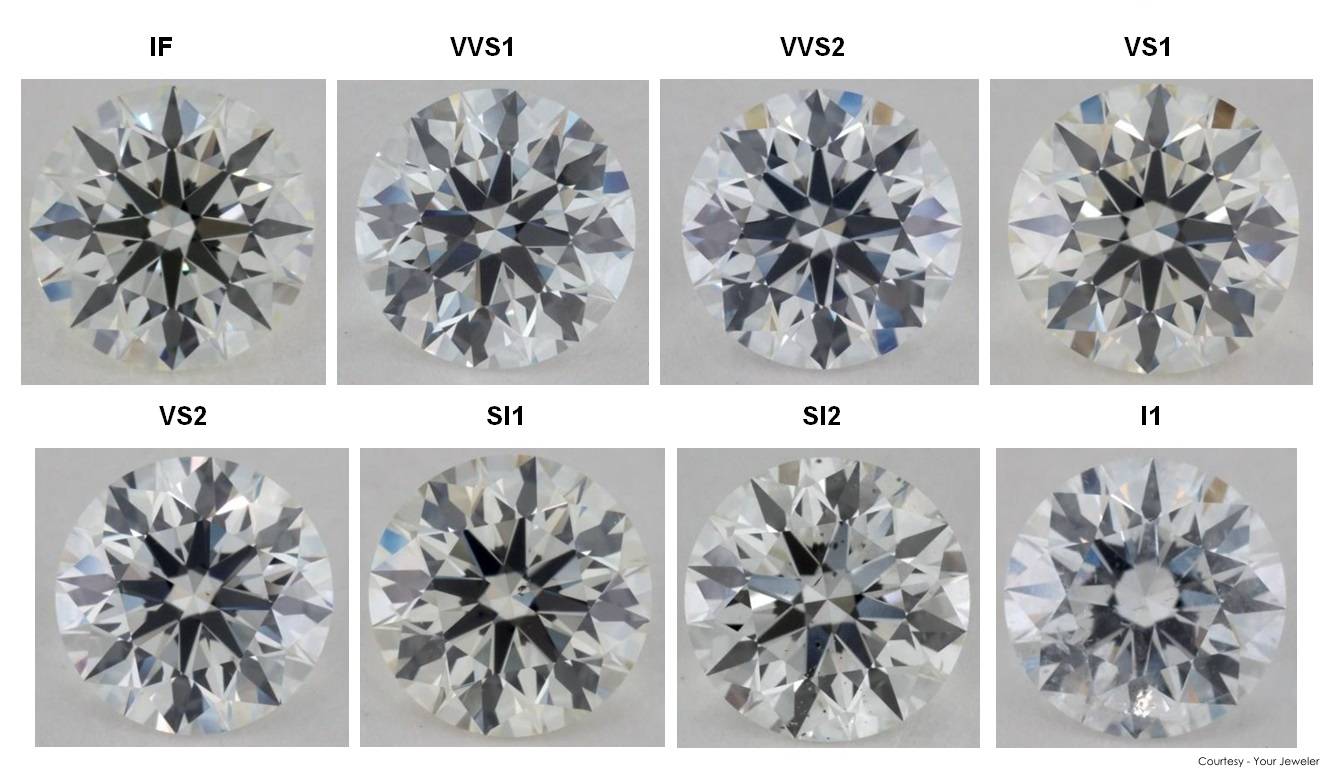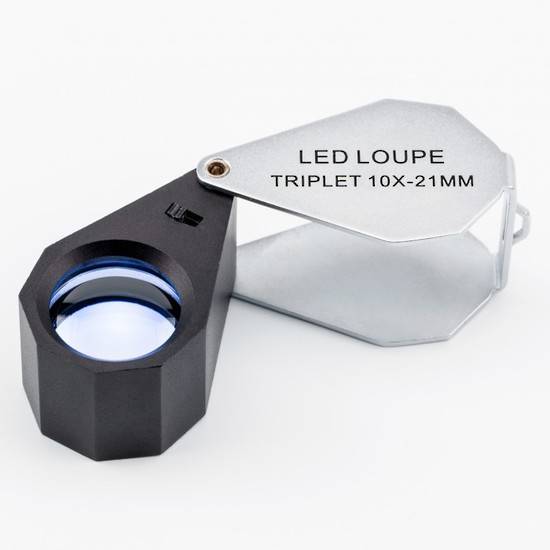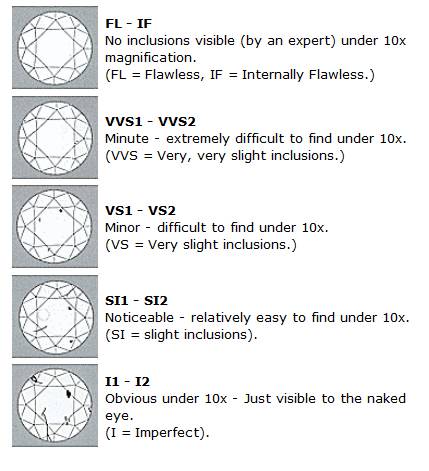Diamond Clarity
The Clarity of a diamond is determined by the absence of internal characteristics within the stone and by the blemishes present on the surface of the stone.Diamonds, as you now know, form deep within the earth at high temperatures and pressures and grows in a natural environment. Particles and pieces from the earth get trapped within the stone during its formation. Thus it gives each stone its own individual character and as we love to say at KuberBox, it also gives the gem a birthmark. Inclusions tell gemologists a lot about the formation of a stone. From where it was formed, what the stone went through, which other minerals formed alongside the diamond all the way to what environment the diamond blossomed in. Clarity can also be termed as the “quality” of a diamond and can be used interchangeably. A diamond’s clarity is based primarily on Inclusions and blemishes being either completely enclosed within the stone or confined entirely to the surface of the gem respectively. Most inclusions present within a stone are so small that they can only be seen under magnification, and are invisible to the unaided eye. This is the reason diamonds are graded at 10X magnification. With the help of a loupe or a microscope, gemologists are able to determine the exact clarity grade without missing a single pinpoint in the stone.






The factors on which a diamond’s clarity is based on are -
- The number of inclusions present in the stone.
- The relief in comparison to its surrounding.
- The position of the inclusion.
- Nature or the type of inclusion.
- The size of the inclusion
Different Diamond Clarity -
- Flawless (FL) - Flawless (FL) diamonds are stones that do not have any internal or external characteristics present. Although clarity characteristics that help in retaining the weight of the stone can be present, like naturals, or extra facets. These stones can also have internal graining present as long as it is not very visible under 10X magnification. Customers sometimes want the best diamond they can buy. Having heard that Flawless stones are the best and without much knowledge, they could come looking to buy a stone. Many times jewellers themselves have never seen an FL stone. Extremely rare stones generally don’t reach the market and are auctioned off to collectors.
- Internally Flawless (IF) - Internally Flawless (IF) stones are quite rare themselves and have no internal characteristics as the name suggests. These stones, however, have surface restricted blemishes like surface graining, extra facets and naturals. Although these are clean stones they must be judged by experienced gemologists to be sure the can be assigned the grade.
- Very Very Slightly Included (VVS1 AND VVS2) - Very Very Slightly Included (VVS1 and VVS2) are more commonly seen on the market than the previous two grades mentioned. In South India, these stones are a big favourite and can be seen in almost all the jewellery sold. This is to do with a myth that the stones of grades lower than VVS1 or 2 come with black spots, which are considered a bad omen there. Under 10X magnification, trained gemologists will find minute inclusions. Small pinpoints, tiny feathers, bearding around the girdle and even tiny cavities can be seen on these stones. Completely invisible to the unaided eye, sometimes they can be removed with a little re-polish. You can recommend these stone to your customers as special diamonds for any occasion as they have such minor inclusions. These stones command a good premium over the more commonly available grades such as SI1 & SI2 and can be recommended to customers who are looking for inclusion-free diamonds.
- Very Slightly Included (VS1 AND VS2) - As we move along the scale the number of inclusions and the visibility of each inclusion slowly increases. Very Slightly Included (VS1 and VS2) have minor inclusions. These stones could have crystals, and clouds present within the stones. At KuberBox, we offer our clients the option to choose the clarity for the products they wish to buy and you must be able to explain the same to your customer. They have the option to customise their jewellery where they can choose the VS clarity grade in stones. The VS clarity grade falls between the premium VVS grade and the economic SI grade and thus they are preferred by customers who want something better than the SI grade, while not paying the huge premium of VVS grade. As the name suggests, VS-grade diamonds are very slightly included. That means the number and the visibility of the inclusions are minimum.
- Slightly Included (SI1 AND SI2) - Slightly Included (SI1 and SI2 ) diamonds have noticeable inclusions that are visible to a trained gemologist at 10X magnification. The inclusions include clouds, crystals, knots, larger feathers. These are a very common grade of diamonds available on the market and when selling them to your customers, lay emphasis on the fact that the inclusions cannot be seen by the unaided eye and more importantly, they are also an affordable option for all. They are perfect for the budget without compromising on the look of the stone. All these characteristics give your store an identity of its own. SI stones have also been noted to be the highest selling diamonds across the world in the retail sector. Size does matter when it comes to diamonds and although stones in smaller sizes hide their inclusions larger stones tend to have larger inclusions and could also be more visible. Thus when buying solitaires you should encourage your clients to buy better clarities and not in the SI range or under. For smaller diamonds which are not solitaire size, one can definitely opt for the SI grade since the inclusion will not at all be visible.
- Included (I1, I2 AND I3) - Included (I1 , I2 and I3 ) diamonds have eye visible inclusions, which can affect the durability and beauty of the stone. Obvious inclusions like feathers; large crystals all drop the clarity of the stone, thus also affecting the brilliance. When selling a lower grade diamond to a client they might not be so interested in the clarity aspect so by focusing your attention to other factors like the cut, or the carat weight it might prove to be more beneficial. KuberBox doesn’t recommend the use of I clarity diamonds and thus we never promote or offer to sell these diamonds.


